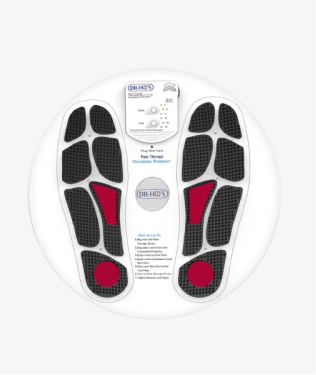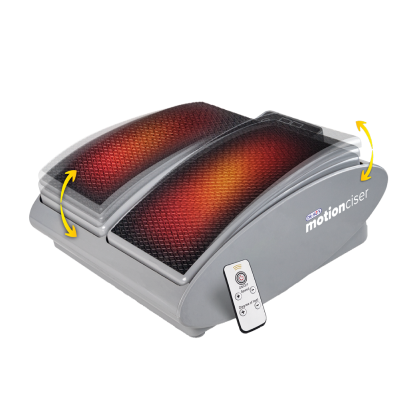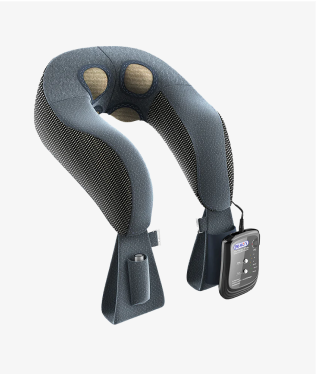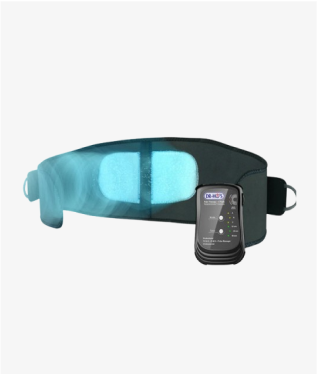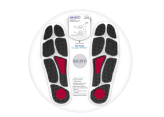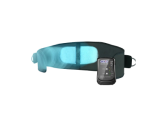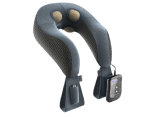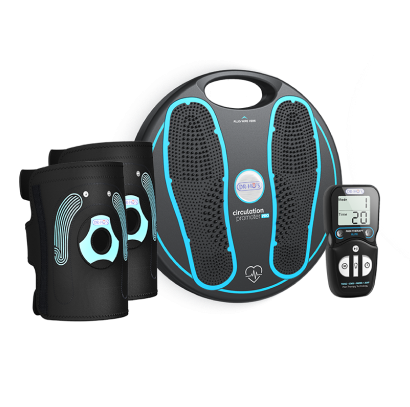October 28, 2025
Understanding Electrotherapy
How does a TENS unit temporarily decrease pain? There are two main theories that explain the mechanism of TENS therapy and temporary pain relief: The Gate Control Theory and The Endorphin Release Theory. TENS, or Transcutaneous Electrical Nerve Stimulation, is a method of pain relief that uses small electrical currents transmitted across the skin ('transcutaneous' means across the skin) to stimulate nerves and alleviate pain. TENS units are becoming increasingly common for at-home pain relief and are currently used by thousands of doctors, nurses, physical therapists and chiropractors. In fact, both the The American College of Physicians and American Academy of Family Physicians now suggest clinicians treat patients with acute pain from non–low back, musculoskeletal injuries with TENS therapy. Systematic reviews have demonstrated that TENS therapy is effective for various pain conditions and leads to positive outcomes, such as pain relief and improved patient conditions.
Types of Pain TENS Can Treat
Transcutaneous electrical nerve stimulation (TENS) is a versatile option for pain relief, offering benefits for a wide range of pain conditions. TENS units are commonly used to help manage chronic pain, such as persistent back pain or joint discomfort, as well as to provide temporary pain relief for acute issues like post-surgical pain or injuries from orthopedic surgery. Many people find TENS therapy helpful for relieving pain associated with arthritis, fibromyalgia, and even nerve-related conditions like diabetic neuropathy or pain following a spinal cord injury. TENS can also be used to reduce pain signals in cases of facial nerve pain, menstrual cramps, and labor pain. By stimulating nerves and interrupting pain signals before they reach the brain, TENS units can offer effective pain control and symptomatic pain relief, making it easier for individuals to manage pain and improve their quality of life.
Benefits of Using a TENS Machine
There are several advantages to using a TENS machine for pain relief. One of the key benefits is that TENS units provide a noninvasive method for managing pain, eliminating the need for surgery or reliance on medications that may cause unwanted side effects. The compact and portable design of most TENS machines allows users to experience pain relief at home, at work, or while traveling. TENS therapy can also be combined with other pain management strategies, such as physical therapy or medication, to enhance overall pain control. Additionally, the electrical nerve stimulation from a TENS unit can encourage the body to produce natural painkillers, like endorphins, which help reduce pain and promote a sense of wellbeing. For many people, TENS offers a safe, convenient, and effective way to manage pain and support a more active lifestyle.
The Gate Control Theory
TENS therapy and pain relief references The Gate Control Theory to explain how it works. TENS units deliver electrical current through the skin to stimulate nerves. This theory espouses that electrical pulses administered by TENS units reduce pain signals from reaching the brain. The electrical pulses are thought to interfere with pain messages so that the pain sufferer can feel temporary relief.
The effectiveness of TENS may also depend on the specific affected area being treated.
The Endorphin Release Theory
The second most common scientific theory is The Endorphin Release Theory. This theory hypothesizes that electrical stimulation can produce endorphins in the body. Placing electrodes on specific acupuncture points may enhance the release of endorphins and improve pain relief, as these points are recognized in both traditional acupuncture and modern TENS treatments. These endorphins are the body’s natural painkillers, reducing pain signals from the brain. The benefit is that it is completely natural and absent of harmful side effects or dependency issues.
Source: tensunits.com
Where Did The Gate Control Theory Originate?
The Gate Control Theory was first published in the 1960’s by Melzach and Wells. Dr. Wells used a TENS unit to help treat a patient. Early devices often used conventional TENS settings, which deliver stimulation at the same frequency and intensity; over time, this can lead to reduced effectiveness due to tolerance. He observed that a low-intensity current of electrical impulses was capable of “jamming pain signals” and creating a pleasant substitute. He confirmed that the unit did not create pain, but instead, replaced pain signals with a tingling sensation under the pads.
Potential Side Effects of TENS
While TENS therapy is generally safe and well-tolerated, it’s important to be aware of potential side effects. The most common issue is skin irritation, which can occur where the electrodes or adhesive pads contact the skin. Some users may also notice muscle twitching or a tingling sensation during or after TENS treatment, especially when using high frequency (HF TENS) settings. Low frequency (LF TENS) modes may reduce the likelihood of these sensations. TENS should never be applied to open wounds, and individuals with pacemakers or other implanted devices should consult a healthcare professional before starting TENS therapy. To minimize side effects, always begin treatment at a low intensity and follow recommended guidelines. By understanding these potential effects and taking proper precautions, users can safely benefit from TENS for pain management.
TENS Unit Maintenance and Care
Proper maintenance and care are essential for keeping your TENS unit working effectively and ensuring safe pain relief. After each session, gently clean the electrode pads with rubbing alcohol and let them air dry to help prevent skin irritation and maintain good hygiene. Regularly inspect the lead wires for any signs of wear or damage, and store your TENS unit in a cool, dry place when not in use. Be sure to follow the manufacturer’s instructions for replacing batteries, and always use a battery powered device that is specifically designed for TENS treatments. Check the electrode pads frequently and replace them as needed to ensure optimal performance during each treatment. If you have any questions about using or maintaining your TENS unit, consult a healthcare professional for personalized advice. With proper care, your TENS unit can continue to provide effective pain relief and support your pain management routine.
Are You New to TENS Therapy?
Before you start treatment with TENS, it is important to consult a healthcare professional such as your doctor, pain clinic, or physiotherapist. TENS can also be used alongside other methods of pain relief, providing a supplementary option for managing discomfort.
If you’re new to TENS and have little to no knowledge about how TENS work to temporarily relieve both muscle and arthritic pain, we have resources to help educate you on the benefits of electrical stimulation for at-home, symptomatic pain relief and pain relief from arthritis. People report varying experiences with TENS, including different levels of pain relief.
Check out the DR-HO’S range of products if you are interested in trying TENS or refer to the resources below for more information.
Learn More About TENS Therapy
-
Best TENS Machine: How to Find the Best Price, Quality, & Machine
-
TENS Machine Reviews: Customer Reviews on DR-HO'S TENS Machines
-
How to Use a TENS Machine – And How to Know You're Using It Properly
Disclaimer: DR-HO'S content is intended for informational purposes only and should not be taken as medical advice. Please consult a certified medical professional for diagnosis and treatment recommendations.


